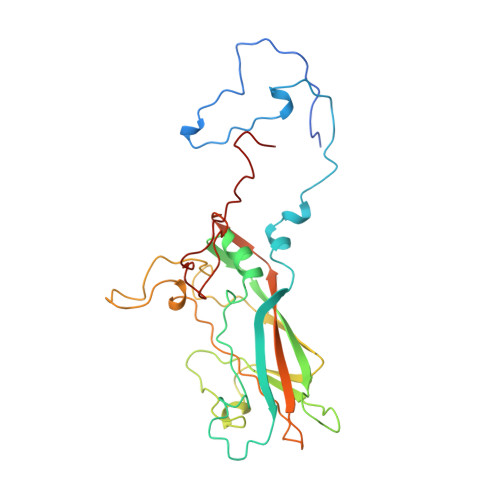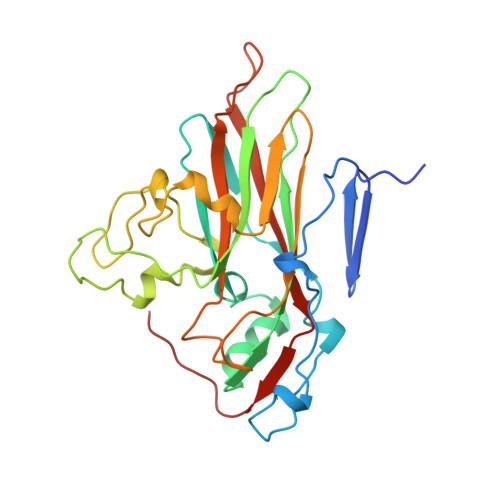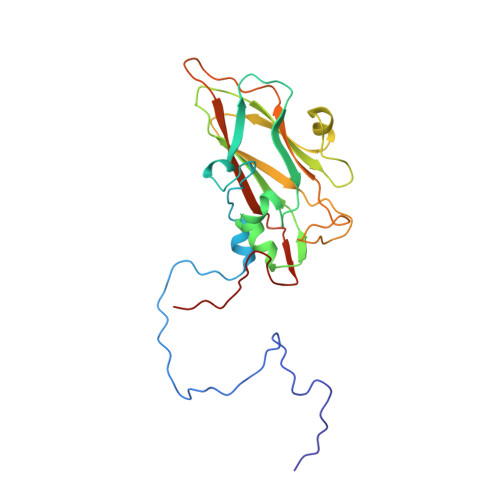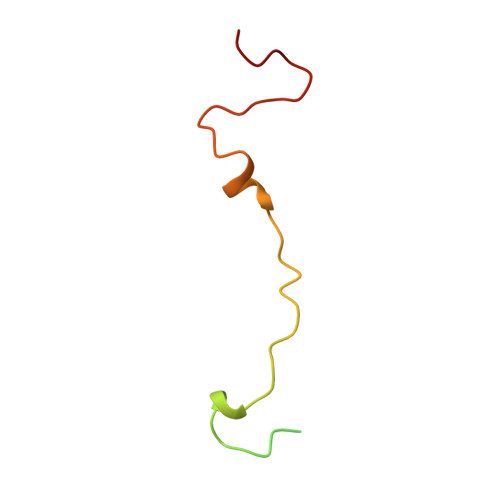Synthesis and activity of piperazine-containing antirhinoviral agents and crystal structure of SDZ 880-061 bound to human rhinovirus 14.
Oren, D.A., Zhang, A., Nesvadba, H., Rosenwirth, B., Arnold, E.(1996) J Mol Biol 259: 120-134
- PubMed: 8648640
- DOI: https://doi.org/10.1006/jmbi.1996.0307
- Primary Citation of Related Structures:
1VRH - PubMed Abstract:
A series of antipicornaviral agents containing piperazinyl moieties was synthesized with the objective of obtaining a compound with a broad spectrum of antirhinovirus activity, high potency (< or = 0.003 microgram/ml), and low cytotoxicity (> or = 30 micrograms/ml). Five compounds of this series were evaluated in detail for efficacy against various HRV serotypes. The agent SDZ 880-061, containing the benzothiazine moiety SDZ 108-075, which is particularly active against HRV14, and the thiazolyl acetic acid ester group of SDZ 89-124, which is potent against HRV1B, indeed has a relatively broad antiviral spectrum. SDZ 880-061 inhibited 85% of 89 HRV serotypes tested at a concentration of < or = 3 micrograms/ml. The 3.0 A resolution X-ray structure of SDZ 880-061 bound to HRV14 has revealed the binding characteristics of this potent compound. It binds in the same pocket as other capsid-binding antiviral agents characterized to date, leaving the innermost portion of the pocket vacant. The binding causes similar, although less extensive, alterations of the HRV14 VP1 backbone conformation (residues 100 to 110, 151 to 159, and 213 to 224) compared to other antiviral agents analyzed structurally. Although the contacts between SDZ 880-061 and HRV14 are mostly of hydrophobic character, the inhibitor has three relatively short polar interactions with residues of VP1 that represent potential hydrogen bonds. The amount of solvent-accessible surface area of SDZ 880-061 buried in the complex (613 A2) is within the range of that observed in protein-protein interfaces. The observed influence of time of addition or removal of SDZ 880-061 on virus yield and on the infectious-center formation indicates that the compound primarily interferes with HRV14 cellular attachment. Since it is assumed that uncoating requires virion instability and/or flexibility, the finding that SDZ 880-061 has only a marginal effect on uncoating may be due to the fact that it does not completely fill the hydrophobic pocket.
Organizational Affiliation:
Center for Advanced Biotechnology and Medicine (CABM), Piscastaway, NJ, USA.


















